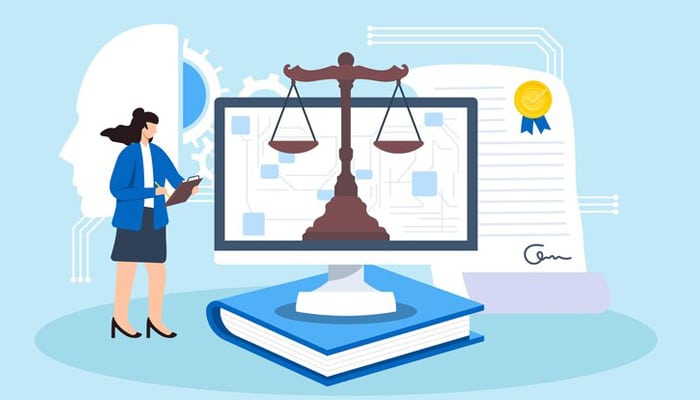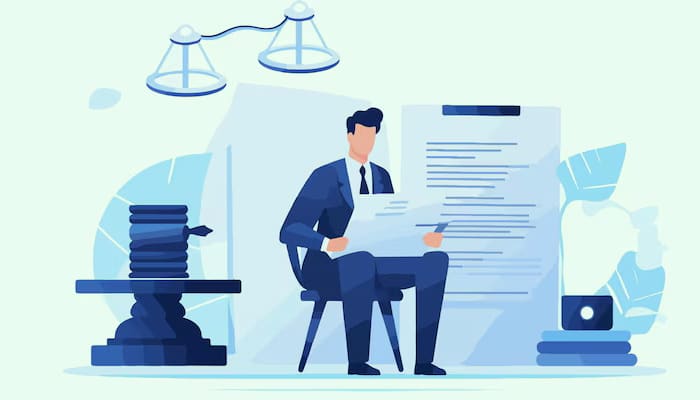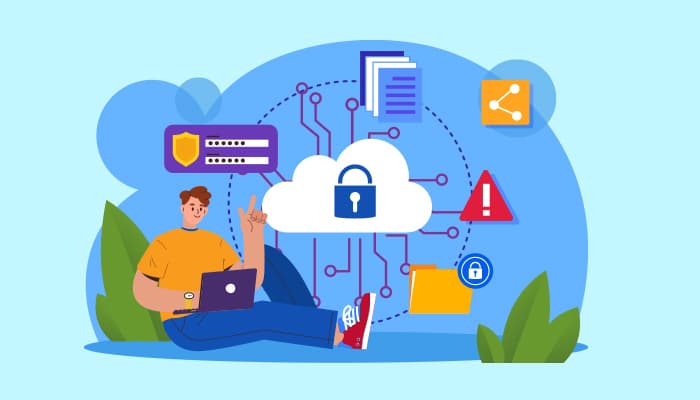Introduction
Technology has become increasingly vital in the legal profession, revolutionizing various aspects of legal practice. From streamlining research processes to improving client communication and case management, technology has become indispensable for law firms and legal professionals seeking to remain competitive in a rapidly evolving landscape.
In this article, we delve into the intersection of technology and legal writing, exploring how innovative tools and software are reshaping traditional approaches to drafting legal documents. By leveraging technology effectively, legal professionals can significantly enhance efficiency, accuracy, and productivity in their writing tasks.
Evolution of Legal Writing Tools
Traditional Methods of Legal Writing
Legal writing has a rich history rooted in pen and paper, typewriters, and handwritten documents. Historically, legal professionals relied on labor-intensive processes for drafting, reviewing, and storing legal documents. Manuscripts, court transcripts, and typewritten briefs were commonplace, requiring meticulous attention to detail and manual organization. Despite their effectiveness at the time, these traditional methods were inherently time-consuming and prone to errors, often resulting in inefficiencies in legal practice.
Emergence of Technology in the Legal Field
The late 20th century witnessed a significant shift in the legal landscape with the advent of technology. The introduction of computers, word processing software, and email revolutionized how legal professionals approached their work. These technological advancements streamlined many aspects of legal writing, offering speed, accuracy, and convenience. Suddenly, tasks that once took hours or days could be completed in minutes, empowering lawyers to focus more on strategy and analysis rather than administrative tasks.
Evolution of Legal Writing Tools and Software
As technology continued to evolve, so did the tools available to legal professionals. From basic word processors to sophisticated legal practice management software, the market saw a proliferation of specialized tools tailored to the unique needs of legal writing. Document management systems, case management software, and online research platforms became indispensable tools for organizing, analyzing, and presenting legal information. Moreover, the rise of artificial intelligence (AI) has brought about advanced capabilities such as automated document drafting, intelligent legal research, and predictive analytics, further enhancing efficiency and productivity in legal writing.
4 Benefits of Technology in Legal Writing
- Improved Organization and Management of Legal Documents
Modern document management systems offer robust features for categorizing, storing, and retrieving legal documents efficiently. With digital storage and indexing capabilities, legal professionals can quickly access relevant documents, track versions, and ensure compliance with document retention policies, streamlining workflow and reducing the risk of misplaced or lost files.
- Enhanced Collaboration Among Legal Professionals
Collaboration tools and cloud-based platforms facilitate seamless communication and collaboration among legal teams, regardless of geographical location. Real-time document sharing, simultaneous editing, and commenting features promote effective collaboration, enabling legal professionals to work together efficiently on drafting, reviewing, and finalizing legal documents, leading to improved productivity and teamwork.
- Automation of Routine Tasks to Save Time and Reduce Errors
Automation tools streamline repetitive tasks such as document assembly, contract generation, and standard letter drafting. By leveraging templates, predefined clauses, and workflow automation, legal professionals can automate routine processes, significantly reducing manual effort and minimizing the risk of errors or inconsistencies. This not only saves time but also enhances accuracy and ensures compliance with established standards and regulations.
- Integration of AI for Advanced Research and Analysis
AI-powered legal research platforms and analytical tools revolutionize the way legal professionals conduct research and analyze data. Natural language processing (NLP) algorithms enable faster and more comprehensive searches, extracting relevant information from vast databases and identifying patterns or trends. AI-driven analytics provide valuable insights for case strategy, risk assessment, and decision-making, empowering legal professionals to make informed decisions efficiently and effectively.
Key Tools and Software for Legal Writing
-
Document Management Systems (DMS): DMS are essential for organizing, storing, and retrieving legal documents efficiently. They streamline document workflows, enable version control, and ensure compliance with data security regulations. Popular examples include SharePoint, iManage, and NetDocuments. DMS facilitates collaboration among legal teams, improve document accessibility, and enhance productivity by centralizing document management processes.
-
Case Management Software: Case management software helps legal professionals manage case-related information, deadlines, and tasks effectively. These tools streamline case workflows, automate routine tasks, and improve communication within legal teams and with clients. Examples include Clio, MyCase, and PracticePanther. Case management software enhances organization, increases efficiency, and enables better decision-making by providing comprehensive case overviews.
-
Legal Research Platforms: Legal research platforms provide access to vast databases of legal resources, including statutes, case law, and secondary sources. They offer advanced search capabilities, citation analysis, and tools for annotating and organizing research findings. Popular platforms include Westlaw, LexisNexis, and Bloomberg Law. Legal research platforms empower legal professionals to conduct thorough and accurate research, analyze legal issues effectively, and support informed decision-making.
-
Contract Drafting and Analysis Tools: Contract drafting, and analysis tools automate the process of creating, reviewing, and managing contracts. They offer templates, clause libraries, and features for comparing and analyzing contract provisions. Examples include Contract Express, Kira Systems, and LawGeex. These tools streamline contract workflows, ensure compliance with legal standards, and mitigate risks by identifying inconsistencies and potential issues in contracts.
-
Proofreading and Editing Software: Proofreading and editing software assists legal professionals in ensuring the accuracy, clarity, and professionalism of their written documents. They provide spelling and grammar checks, style suggestions, and tools for consistency and readability analysis. Examples include Grammarly, ProWritingAid, and PerfectIt. Proofreading and editing software help legal professionals polish their writing, maintain professional standards, and convey complex legal concepts clearly and effectively.
Best Practices for Integrating Technology into Legal Writing
-
Training and education for legal professionals on using technology effectively: Legal professionals should undergo comprehensive training programs to harness the full potential of technological tools in their writing tasks. This includes instruction on utilizing legal research databases, drafting software, and document management systems efficiently. Moreover, ongoing education ensures proficiency in new tools and techniques, empowering professionals to streamline workflows and enhance productivity while maintaining quality standards in legal writing.
-
Regular updates and maintenance of software tools: Continuous updates and maintenance of software tools are essential to optimize their performance and ensure compatibility with evolving legal writing requirements. Legal professionals must regularly monitor and install updates to address security vulnerabilities, bug fixes, and feature enhancements. Additionally, proactive maintenance practices such as data backups and system checks help prevent downtime and data loss, safeguarding critical legal documents and ensuring uninterrupted workflow efficiency.
-
Ensuring compliance with security and confidentiality standards: Integrating technology into legal writing necessitates strict adherence to security and confidentiality standards to protect sensitive client information and uphold professional ethics. Legal professionals must implement robust data encryption, access controls, and authentication mechanisms to safeguard against unauthorized access or data breaches. Compliance with industry regulations such as GDPR and HIPAA ensures the highest level of confidentiality and instills trust in clients regarding the protection of their legal matters.
-
Leveraging technology to improve client communication and satisfaction: Technology offers numerous avenues for legal professionals to enhance client communication and satisfaction. Utilizing client portals, secure messaging platforms, and virtual meeting tools facilitates seamless interaction and collaboration, irrespective of geographical constraints. Moreover, automated document sharing, and real-time updates enable clients to stay informed about case progress and milestones, fostering transparency and trust. By leveraging technology effectively, legal professionals can deliver personalized, responsive services that meet clients’ evolving needs and expectations, ultimately enhancing overall satisfaction and loyalty.
Challenges and Considerations
- Integration With Existing Workflows and Systems
Integrating new technology into established workflows can be challenging. It requires careful planning and coordination to ensure seamless integration without disrupting productivity. Compatibility issues, training requirements, and workflow adjustments may arise. Effective communication and collaboration between IT teams and end-users are essential to identify potential bottlenecks and develop tailored solutions that align with existing processes.
- Cost Considerations and Budgeting for Technology Investments
Implementing new technology involves significant financial considerations. Organizations must carefully evaluate upfront costs, ongoing expenses, and potential ROI. Budgeting for technology investments requires balancing short-term financial constraints with long-term strategic objectives. Cost-benefit analyses, vendor negotiations, and prioritization of key initiatives are critical to optimizing resource allocation and maximizing the value of technology investments.
- Addressing concerns about data privacy and security
Data privacy and security are paramount considerations in today’s digital landscape. Organizations must establish robust measures to protect sensitive information and comply with regulatory requirements. This involves implementing encryption protocols, access controls, and regular security audits. Transparent communication with stakeholders about data handling practices and proactive risk mitigation strategies are essential to build trust and mitigate potential breaches or compliance issues.
- Overcoming Resistance to Change Among Legal Professionals
Resistance to change is a common challenge, particularly in professions with traditional practices like law. Legal professionals may be hesitant to adopt new technologies due to concerns about job security, unfamiliarity, or perceived disruptions to established workflows. Overcoming resistance requires effective change management strategies, including education, training, and incentivization. Providing clear benefits, demonstrating usability, and fostering a culture of innovation can help alleviate fears and facilitate a smooth transition to new tools and processes.
Future Trends and Predictions
- Continued Advancement of AI and Machine Learning in Legal Writing
As AI and machine learning technologies evolve, we can expect significant advancements in legal writing. These tools will become increasingly sophisticated, offering enhanced capabilities for legal research, drafting contracts, and analyzing case law. AI-driven platforms will streamline the writing process, improving efficiency and accuracy for legal professionals. Moreover, as these technologies learn from vast amounts of legal data, they will provide valuable insights and recommendations, empowering lawyers to deliver higher-quality work in less time.
- Integration of Blockchain Technology for Secure Document Management
Blockchain technology holds immense potential for revolutionizing document management within the legal sector. By leveraging blockchain’s decentralized and immutable nature, law firms can ensure the integrity, authenticity, and security of legal documents. Smart contracts built on blockchain platforms enable automated execution of agreements, reducing the need for intermediaries and minimizing the risk of disputes. Moreover, blockchain enhances transparency and traceability, enabling stakeholders to track document revisions and access a tamper-proof audit trail, thereby fostering trust and efficiency in legal processes.
- Potential Impact of Emerging Technologies Such as Natural Language Processing (Nlp) and Predictive Analytics
Emerging technologies like natural language processing (NLP) and predictive analytics are poised to reshape the landscape of legal operations. NLP algorithms enable computers to understand and interpret human language, facilitating tasks such as contract analysis, legal document summarization, and e-discovery. Predictive analytics leverages data-driven insights to forecast legal outcomes, optimize case strategies, and mitigate risks. By harnessing the power of NLP and predictive analytics, legal professionals can enhance decision-making, streamline workflows, and deliver more strategic and cost-effective legal services, ultimately driving greater efficiency and innovation in the legal industry.
Conclusion
The intersection of technology and legal writing represents a pivotal moment in the evolution of the legal profession. As showcased throughout this article, innovative tools and software have revolutionized traditional approaches to drafting legal documents, offering unprecedented levels of efficiency, accuracy, and productivity. From the historical context of pen and paper to the emergence of advanced AI-driven platforms, the trajectory of legal writing tools reflects a continuous quest for optimization and excellence. Looking ahead, the future trends and predictions indicate a landscape shaped by continued advancements in AI, blockchain integration for secure document management, and the transformative potential of emerging technologies like natural language processing and predictive analytics. By embracing these trends and leveraging technology effectively, legal professionals can navigate the complexities of modern legal practice with confidence, agility, and success.







